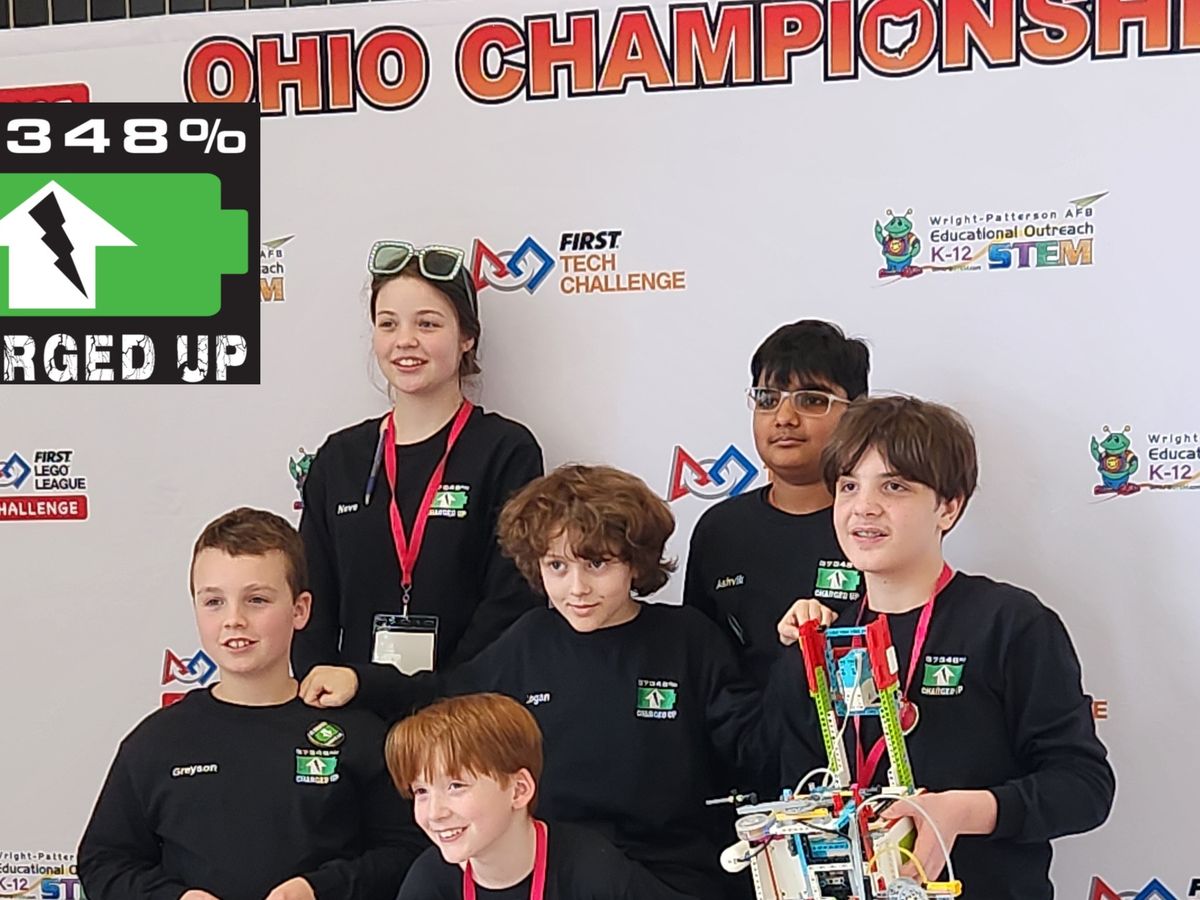OUR STORY:
We are Team 37348 Charged Up! And we are going to Houston!
Charged Up! is a neighborhood F.I.R.S.T. LEGO League Challenge team that meets 3 days/wk at the KSS Robotics Makerspace in Kent, OH. We design, build, program, and operate a Lego Robot operated by a SPIKE™ Prime Hub that plays a complicated field game while also mastering an Innovation Project, developing a team brand, and attending outreach events.
On March 11, we did well enough at the Ohio FIRST Lego League Championship to advance to Worlds! This advancement qualifies us to compete with 108 teams from around the world at the FIRST 2024 Championships in Houston, TX on April 17-20.
This accomplishment adds approximately $27,500 to our annual budget. To keep travel costs low for team members and volunteer mentors, we are asking for your help. Please consider a gift of any size to help us take Gud Boi and Gerald, our robot and innovation project, and our team members to Houston!
What is FIRST Lego League (FLL) Challenge?
FIRST Lego League Challenge introduces science, technology, engineering and math (STEM) to children ages 9-16. Friendly competition is at the heart of Challenge, as teams of up to 10 members engage in research, problem-solving, coding and engineering - building and programming a LEGO robot that navigates the missions of a robot game.
Our INNOVATION PROJECT:
As part of FLL Challenge, teams also participate in a research project to identify and solve a relevant real-world problem.
This season, we were asked how we share our hobbies and interests using technology. While we had some initial ideas, we decided to meet with 7 experts in the field of hobbies and leisure to learn more about challenges they face in reaching their audience. They shared insight in their tech usage. Common goals among experts include increasing exposure for their work and attracting a wider audience.
We also surveyed local community members at the Snow Day Festival in Kent to understand potential barriers to trying new activities. Most expressed willingness to explore new hobbies, but half said a lack of time, access, or high costs were obstacles.
After interviewing professionals and collecting surveys, we decided to help our professionals reach their audience and find a fun way for individuals experience a new hobby in an accessible way that can help them to save time and money.
To achieve this, we explored a few ideas. We met with students at the Advanced Telerobotic Lab in the Department of Computer Sciences at Kent State University. Professor Kim and students Bailey and Sophia agreed to be our season mentors and helped in making the decision for our solution.
OUR SOLUTION:
Dippin’ Dabble combines a VR experience with a connected hobby-attempting robot, we lovingly named Gerald.
Dippin’ Dabble offers a LIVE VR experience. Users download the app, linking to a humanoid robot remotely. Through their VR headset, they select a hobby and see what Gerald’s camera sees.
Partnering with venues ensures robot availability like Gerald at the symphony or the zoo. Users control Gerald to engage in various activities.
Our prototype Gerald represents Dippin’ Dabbles future. While existing humanoid robots are expensive, we envision the future for Dippin’ Dabble.
What’s possible in the future is our vision today!
To learn more about our project please visit our webpage at: https://sites.google.com/view/kssrobotics/teams/fll/team-37348-charged-up
We compete with a FLL Challenge tournament bot, that we designed and built with LEGO Technic bricks, motors, and a SPIKE Hub.
Our Robot design:
Over the summer, we worked on what we felt was the ideal robot. We wanted to make our new bot smaller and have better CG.
We decided to make two permanent forklifts and run them at the same time. This proved to be very difficult due to the inaccuracy of the Lego motors. We decided to move away from two and go back to one permanent forklift. We installed a large motor in the forklift to make it strong.
This year we chose to not use the Lego bearings for pivoting the rear of the robot. We tested this and found that the bearings helped exaggerate the drive motor’s inaccuracy. So instead we use two 43.2 mm standard wheels mounted to one 12 long axle. We tested this over 30 times and found that it was within ⅛” accuracy.
Organizer
KSS Robotics
Beneficiary

